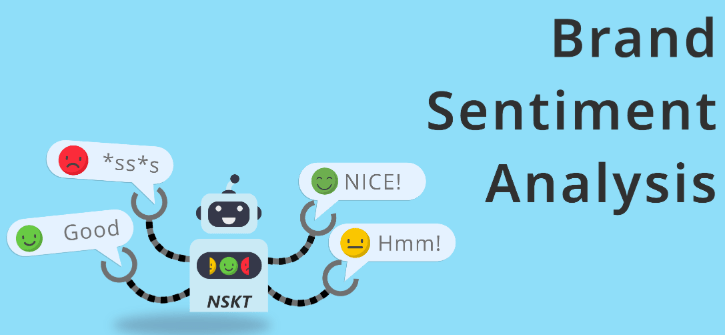In today’s fast-paced digital landscape, brand sentiment plays a pivotal role in shaping consumer perceptions and driving business success. From multinational corporations to local startups, companies are recognizing the significance of monitoring and managing their brand sentiment. In this article, we’ll delve into the concept of brand sentiment, its impact on businesses, and effective strategies to enhance and maintain a positive brand sentiment. So, let’s dive right in and explore this essential aspect of modern marketing.
Defining Brand Sentiment

Brand sentiment refers to the emotional perception and attitudes that consumers hold towards a particular brand. It encompasses the feelings, opinions, and associations that individuals associate with a brand’s products, services, and overall identity.
The Power of Public Perception
In an interconnected world where information spreads rapidly, public perception can make or break a brand. Positive sentiment analysis can lead to increased customer loyalty, advocacy, and a competitive edge. Conversely, negative sentiment can result in reputational damage, decreased trust, and lost opportunities.
Why Brand Sentiment Matters
1. Influence on Consumer Decisions
Brand sentiment significantly influences consumer purchasing decisions. When consumers feel positive emotions towards a brand, they are more likely to choose its products or services over competitors.
2. Connecting Emotionally with Customers
Building a strong sentiment analysis allows companies to connect with their audience on an emotional level. Emotions drive actions, and brands that evoke positive feelings can create lasting customer relationships.
3. Effect on Brand Loyalty
Positive sentiment cultivates brand loyalty. Loyal customers not only make repeat purchases but also act as brand ambassadors, spreading positive word-of-mouth and attracting new customers.
Factors Affecting Brand Sentiment
1. Customer Experiences
Exceptional customer experiences contribute to positive sentiment. Brands that prioritize customer satisfaction and go above and beyond expectations tend to generate favorable sentiment.
2. Social Media Presence
In the digital age, social media plays a pivotal role in shaping sentiment analysis. Engaging content, responsiveness, and active community management can sway sentiment.
3. Product Quality and Innovation
The quality and innovation of products or services directly impact sentiment. Delivering what was promised and exceeding expectations can foster positive associations.
Measuring Sentiment Analysis
1. Utilizing Sentiment Analysis Tools
Sentiment analysis tools leverage natural language processing to gauge public sentiment toward a brand. These tools analyze social media posts, reviews, and other online content to provide insights.
2. Monitoring Online Conversations
Regularly monitoring online conversations helps brands stay attuned to public sentiment. Engaging with customers’ opinions, whether positive or negative, demonstrates a commitment to improvement.
3. Gathering Customer Feedback
Directly collecting feedback from customers through surveys, reviews, and feedback forms provides valuable insights into sentiment analysis.
Strategies to Boost Brand Sentiment
1. Crafting Authentic Brand Stories
Telling authentic, relatable stories that resonate with the target audience can create an emotional connection and reinforce positive sentiment.
2. Delivering Exceptional Customer Service
Prompt and personalized customer service demonstrates a brand’s dedication to its customers, contributing to a favorable sentiment.
3. Engaging with User-Generated Content
Encouraging customers to share their own experiences and content related to the brand can amplify positive sentiment and create a sense of community.
Dealing with Negative Sentiment
1. Turning Challenges into Opportunities
Addressing negative sentiment transparently and effectively can demonstrate a brand’s willingness to learn and improve, potentially converting critics into advocates.
2. Transparent Communication
Openly communicating about challenges, changes, and improvements shows authenticity and can mitigate the impact of negative sentiment.
3. Swift Conflict Resolution
Resolving customer issues promptly and efficiently can prevent the escalation of negative sentiment.
Maintaining Positive Sentiment Analysis
1. Evolving with Consumer Preferences
Staying attuned to evolving consumer preferences and adapting branding strategies accordingly ensures continued positive sentiment.
2. Consistency in Messaging
Consistent messaging across all touchpoints reinforces brand identity and helps maintain a coherent sentiment.
3. Adapting to Changing Trends
Remaining relevant in a dynamic market by embracing new trends and technologies contributes to positive sentiment analysis.
The Impact of Brand Sentiment on SEO
1. Search Engine Rankings and Visibility
Positive sentiment can indirectly impact search engine rankings and visibility, as engaged users are more likely to spend time on the website.
2. User Engagement and Click-Through Rates
Higher sentiment can lead to increased user engagement and click-through rates, signaling search engines that the content is valuable and relevant.
3. Social Signals and SEO
The positive sentiment expressed through social media shares, likes, and comments can indirectly contribute to improved SEO performance.
Conclusion
In an era where brand perception can swiftly shift with a viral tweet or a compelling customer review, cultivating and maintaining positive brand sentiment is paramount. Brands that prioritize authenticity, exceptional customer experiences, and transparent communication are poised to create lasting connections and drive long-term success. By acknowledging the power of sentiment and consistently nurturing positive associations, businesses can thrive in the digital age. Ready to Enhance Your Brand Sentiment? Discover how AIM Technologies can help you monitor, analyze, and elevate your brand sentiment. Request a demo today and witness firsthand how our advanced tools and insights can empower your brand’s success.
Frequently Asked Questions
How can I measure sentiment analysis effectively?
- Numerous sentiment analysis tools are available, such as Brandwatch, Talkwalker, and AIM Insights, which can help you monitor and analyze brand sentiment across various online platforms.
Is sentiment analysis the same as brand reputation?
- While related, sentiment analysis focuses on emotions and attitudes, while brand reputation encompasses the overall perception and standing of a brand in the eyes of the public.
Can a single negative incident ruin years of positive sentiment?
- While a negative incident can impact sentiment, a strong foundation of positive sentiment built over time can help mitigate the effects and facilitate a quicker recovery.
How do social media influencers influence sentiment analysis?
- Social media influencers can sway sentiment analysis through their endorsements and opinions, as their followers may adopt similar views.
What role does storytelling play in shaping sentiment analysis?
- Storytelling humanizes brands, making them relatable and memorable, which in turn can shape positive sentiment analysis.


